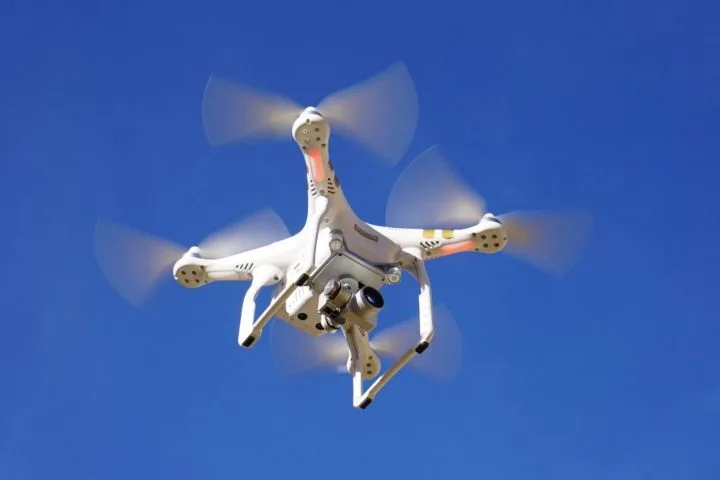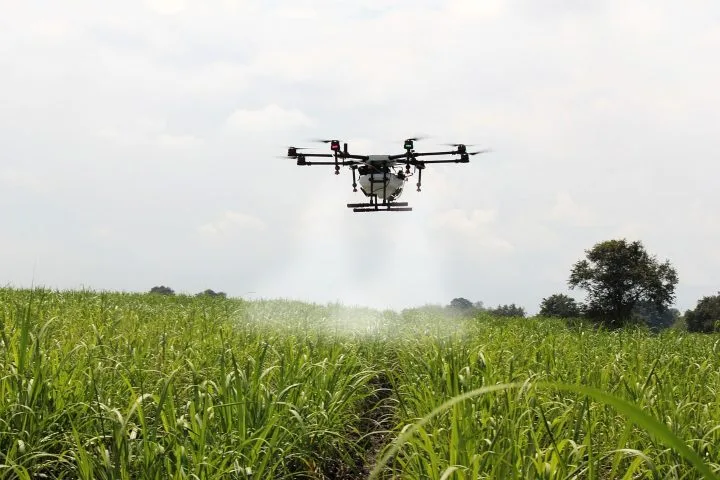The use of drones for commercial purposes has skyrocketed over the past few years. Inspections, both internal and external, have seen some of the fastest growth, but drones are also being utilized extensively in fields like surveillance, agriculture, delivery, and more.
However, this rapid adoption has raised significant privacy concerns. It's crucial for businesses using drones to be aware of and adhere to privacy laws, especially the GDPR, which is a stringent data privacy regulation applicable to all businesses within the European Union. Although laws may differ depending on your location, understanding how GDPR impacts your business and ensuring compliance is essential.

## Key GDPR Principles to Follow When Using Drones
To ensure GDPR compliance when using drones, there are several principles to keep in mind:
### 1. Understand Personal Data and Data Rights
The most important step towards GDPR compliance is comprehending what constitutes personal data. Under GDPR, personal data refers to any information related to an identifiable individual. This includes photos, videos, and audio that can be used to identify individuals captured by drones. It’s also vital to recognize the rights individuals have over their data, such as the right to access and request the deletion of any personal data held by a company.
### 2. Minimize Data Collection and Storage
Minimizing or anonymizing data collection is key to achieving GDPR compliance. Businesses should only collect private data when necessary. However, obtaining consent from bystanders during drone operations can be challenging. Thus, it's best to minimize or anonymize data collection wherever possible. Adhering to FAA guidelines can help, such as avoiding flying over crowds, blurring faces and license plates, and generally trying to avoid collecting identifying information.
### 3. Implement Robust Data Protection Measures
Personal data, including photos, videos, and audio, should be stored securely and kept inaccessible to unauthorized personnel or third parties. Important data protection measures include encryption, strong passwords, two-factor authentication, and a reliable backup system.
### 4. Establish an Official Privacy Policy
Having a formal privacy policy detailing your data protection processes is another critical aspect of GDPR compliance. Posting this policy on your website and other relevant locations is particularly important for drone-operating businesses. It helps protect your business in case of disputes regarding personal data.
Your policy should specify the types of data collected by drones, how it is used, stored, and shared. It should also outline the rights of data subjects and provide instructions on how individuals can reach you with questions or concerns.

## Why GDPR Compliance Matters Beyond Legal Obligations
While complying with GDPR is about staying within the law, it offers numerous advantages to businesses beyond avoiding legal issues. Here are some of the key benefits:
### 1. Builds Customer Trust
GDPR compliance demonstrates to your customers that you can securely store and protect their private data. By having a data protection officer oversee processes and conducting regular audits, you enhance your reputation and build trust with your customers.
### 2. Reduces Operating Costs
GDPR compliance can lower operational costs in various ways. For example, by retiring outdated applications and data inventories, you can reduce unnecessary expenses. Additionally, maintaining an updated data inventory helps consolidate storage efforts, reducing both infrastructure and labor costs. GDPR compliance also enables businesses to engage more effectively with interested customers, leading to higher ROI from targeted marketing efforts.
### 3. Aligns with Emerging Technologies
Compliance with GDPR also means adopting cutting-edge technologies like IoT, cloud computing, and virtualization. These tools help manage increasing amounts of data while improving customer service. Integrating third-party management solutions keeps you vigilant against potential breaches, monitoring log data, and tracking data movement across networks.

## Maintaining GDPR Compliance Across Industries
The General Data Protection Regulation (GDPR) came into effect on May 25, 2018, replacing older data protection laws in response to rising global data breaches and the widespread use of the internet. Prior to GDPR, inadequate security left personal data vulnerable to hackers. Since then, organizations handling EU residents' personal data must comply with stricter regulations.
Achieving GDPR compliance isn't straightforward. GDPR is one of the toughest data privacy laws globally, requiring businesses to thoroughly examine their processing activities, third-party communications, customer access, and data protection strategies. Compliance is an ongoing process.
To help industries like oil and gas—and others—maintain GDPR compliance, here are some practical tips:
### 1. Conduct Regular Audits
Ongoing audits of data processing activities are essential. Performing data protection impact assessments helps organizations evaluate how employees handle sensitive data, such as customer behavior, location, health, and religion.
### 2. Appoint a Data Protection Officer
Oil and gas companies should appoint a dedicated data protection officer (DPO) to ensure compliance. According to Article 37 of GDPR, businesses must appoint a DPO who oversees data protection strategy. Even if your business doesn’t fall under "large-scale" processing, appointing a DPO is advisable.
A DPO should:
- Advise on GDPR practices and regulatory updates
- Monitor data handling to ensure compliance
- Conduct data protection impact assessments
- Handle data processing inquiries
- Serve as a liaison between regulators and the company
- Evaluate risks associated with data processing activities
### 3. Provide Continuous Staff Training
Ongoing training is crucial for maintaining GDPR compliance. A staggering 88% of data breaches result from employee errors, intentional or not. Educate employees on data privacy concepts, explain how daily tasks could lead to breaches, and discourage the use of personal devices for work. Offer refresher courses for existing employees and thorough training for new hires.
### 4. Report Data Breaches Immediately
Under GDPR, immediate reporting of data breaches is mandatory. Controllers and processors must report breaches within 72 hours, as outlined in Article 33. Reports should follow a hierarchy: processors report to controllers, who then inform supervisory authorities.
Supervisory authorities enforce and monitor compliance, acting as the main point of contact for GDPR inquiries. They can impose fines for non-compliance.
### 5. Verify User Ages for Consent
GDPR permits data collection from individuals aged 16 and above. To collect data legally from younger users, obtain consent from guardians. Include age verification features on your platform if children under 16 might interact with your site.
### 6. Assess Third-Party Risks
GDPR holds you accountable for how third-party companies handle your data. Ensure third-party vendors comply with GDPR regulations and update contracts accordingly.
### 7. Update Your Privacy Policy
GDPR requires organizations to have a clear, accessible privacy policy. Notify customers via email whenever updates occur. Seek legal advice when drafting policies.
By following these guidelines, businesses can navigate the complexities of GDPR compliance successfully.
Petrochemical Industry
centrifugal casting furance tube,fired heater, Petrochemical Heating Furnace, reformer tube, catalyst tube
Tuopu Industry(Jiangsu) Co., Ltd. , https://www.tuopu-industry.com